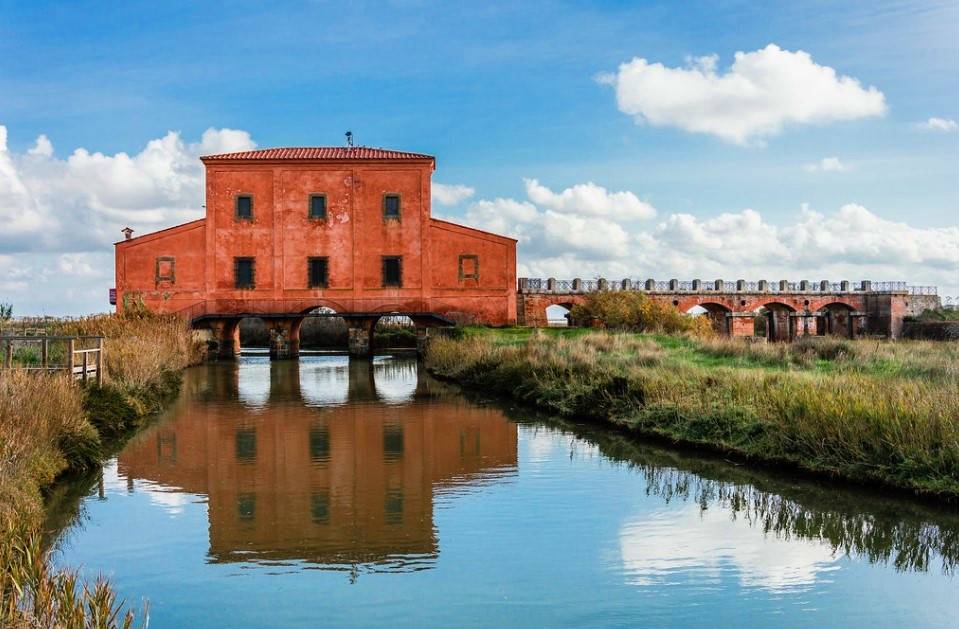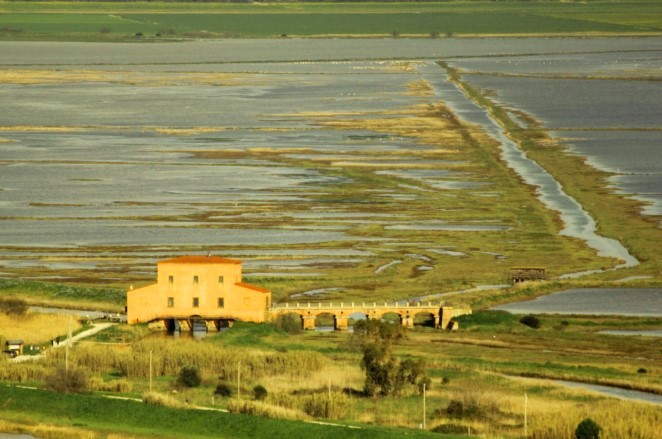Casa Rossa Ximenes and Diaccia Botrona
The Casa Rossa Ximenes Museum and the Diaccia Botrona Nature Reserve, located in Castiglione della Pescaia just a few kilometers from Grosseto, are important landmarks for the history of hydraulic reclamation and the conservation of biodiversity in Tuscany. These two sites offer visitors a unique experience that combines history, engineering, and nature.
Casa Rossa Ximenes
The Casa Rossa Ximenes is a historic building constructed in 1765, designed by Leonardo Ximenes, a Jesuit hydraulic engineer. The structure is located at the mouth of the Bruna River and was part of a complex system of canals designed to reclaim the marshes of the Maremma.
Building Features
The Casa Rossa is characterized by its solid and imposing structure, built with red bricks, which gives it its name. It was used to control water flow through a system of locks and sluices that regulated the irrigation and drainage of the marsh. Today, the building houses the Casa Rossa Ximenes Museum, which documents the history of hydraulic reclamation and the work of Leonardo Ximenes.
Museum Exhibits
The museum offers a variety of exhibits, including:
- Hydraulic Models and Tools: Reproductions and tools used in the 18th century for water management.
- Historical Documents: Maps, drawings, and original writings by Ximenes illustrating the reclamation projects.
- Interactive Exhibits: Multimedia installations explaining reclamation techniques and the significance of Ximenes' work.
Diaccia Botrona Nature Reserve
Adjacent to the Casa Rossa Ximenes is the Diaccia Botrona Nature Reserve, one of the most important wetlands in Italy. This reserve is what remains of the ancient marsh reclaimed by Ximenes and is now a place of great ecological value.
Reserve Features
Diaccia Botrona covers an area of about 1,273 hectares and is characterized by rich biodiversity, hosting numerous species of birds, fish, reptiles, and plants. The reserve is a crucial habitat for many migratory species and an important nesting site.
Activities and Visits
The reserve offers various activities for visitors, including:
- Birdwatching: Observing numerous bird species, including flamingos, herons, and ducks.
- Hiking and Trails: Nature trails for walking or cycling that traverse the reserve, allowing exploration of different habitats.
- Guided Tours: Organized tours that explain the history of reclamation and the ecology of the reserve.
- Boat Trips: Boat excursions through the reserve's canals, offering a unique perspective on local flora and fauna.
Cultural and Environmental Importance
The Casa Rossa Ximenes Museum and the Diaccia Botrona Reserve are vital for preserving historical memory and protecting the environment. The reclamation of the Maremma marshes was a significant hydraulic engineering project, improving the region's quality of life and agricultural productivity. At the same time, the Diaccia Botrona Reserve preserves a precious natural environment, promoting biodiversity and offering educational and recreational opportunities.
Practical Information
The museum and reserve are open to the public with regular visiting hours. Guided tours and various organized activities are available. For details on opening hours, fees, and special events, it is advisable to consult the official website.
https://www.maremma-online.it/riservanaturalediacciabotrona.html
The Casa Rossa Ximenes Museum and the Diaccia Botrona Nature Reserve in Castiglione della Pescaia offer a rich and varied experience that unites history, engineering, and nature. They are ideal places for those who wish to explore the past and present of the Tuscan Maremma, immersing themselves in a fascinating and vibrant environment.

Photos: Comune.grosseto.it / Flickr.com


 English
English Italiano
Italiano Deutsch
Deutsch Français
Français